| View previous topic :: View next topic |
| Author |
Message |
no-X


Joined: 19 Jul 2008
Posts: 2495
Location: Budejky, Czech Republic
|
 Posted: Fri Dec 04, 2009 11:13 am Post subject: List of lens diagrams: triplets, planars & hybrid lenses Posted: Fri Dec 04, 2009 11:13 am Post subject: List of lens diagrams: triplets, planars & hybrid lenses |
 |
|
no-X wrote:
I prepared a list of common triplet-designs + list of coresponding lenses, because I was bored by searching on 10+ websites whenever I needed this info. Maybe it could be useful for somebody else too:
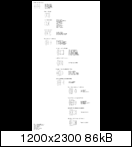
There is no time sequence, only simple logical relations. Many diagrams are really schematic and doesn't represent all nuances - only basic signs.
//edit: here is updated version:
- - - - triplets - - - - // - - - - planars - - - - // - - - - hybrid lenses - - - -
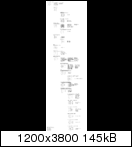 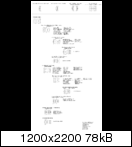 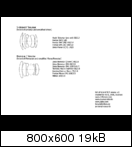
_________________
(almost) complete list of Helios lenses
Last edited by no-X on Sat Jan 30, 2010 8:00 pm; edited 5 times in total |
|
| Back to top |
|
 |
Spotmatic


Joined: 18 Aug 2008
Posts: 4045
Location: Netherlands
|
 Posted: Fri Dec 04, 2009 12:11 pm Post subject: Posted: Fri Dec 04, 2009 12:11 pm Post subject: |
 |
|
Spotmatic wrote:
Tremendous work, thank you! I have stored it locally for future reference.
_________________
Peter - Moderator
Pentax K-5 + Pentax 645 + Canon 5D + Bessa RF 10,5cm Heliar, and a 'little' bag full of MF lenses. The lens list is * here *.
My fast 80s: Asahi-Kogaku Takumar 83mm f/1.9 - Super-Takumar 85mm f/1.9 - FA 77mm f/1.8 Limited - Cyclop 85/1.5 (Helios-40 innards) - Komura 80mm f/1.8 - Meyer Görlitz Primoplan 7,5cm 1:1.9 - Carl Zeiss Jena 80mm f/1.8 Pancolar - Canon 85mm f/1.8 S.S.C. - Canon 85mm f/1.2 S.S.C. Aspherical |
|
| Back to top |
|
 |
LucisPictor


Joined: 26 Feb 2007
Posts: 17633
Location: Oberhessen, Germany / Maidstone ('95-'96)
Expire: 2013-12-03
|
 Posted: Fri Dec 04, 2009 1:09 pm Post subject: Posted: Fri Dec 04, 2009 1:09 pm Post subject: |
 |
|
LucisPictor wrote:
Thanks!
_________________
Personal forum activity on pause every now and again (due to job obligations)!
Carsten, former Moderator 
Things ON SALE
Carsten = "KAPCTEH" = "Karusutenu" | T-shirt?.........................My photos from Emilia: http://www.schouler.net/emilia/emilia2011.html
My gear: http://retrocameracs.wordpress.com/ausrustung/
Old list: http://forum.mflenses.com/viewtopic.php?t=65 (Not up-to-date, sorry!) | http://www.lucispictor.de | http://www.alensaweek.wordpress.com |
http://www.retrocamera.de |
|
| Back to top |
|
 |
no-X


Joined: 19 Jul 2008
Posts: 2495
Location: Budejky, Czech Republic
|
 Posted: Fri Dec 04, 2009 1:21 pm Post subject: Posted: Fri Dec 04, 2009 1:21 pm Post subject: |
 |
|
no-X wrote:
| Relayer wrote: |
I think that Asahi improve sharpness and coating. but lost something in bokeh  |
I think this is true almost for all manufacturers. Their target was sharpness and contrast, so all corrections were aimed on these qualities and bokeh suffered a bit.
I'll try to make some of the lists a bit more complete by adding some Zeiss-Opton examples. I also forgot the cathegory, which includes 135mm Sonnars/Jupiters.
_________________
(almost) complete list of Helios lenses |
|
| Back to top |
|
 |
darmodej

Joined: 03 Jun 2009
Posts: 284
Location: Bratislava, Slovakia
|
 Posted: Fri Dec 04, 2009 1:46 pm Post subject: Posted: Fri Dec 04, 2009 1:46 pm Post subject: |
 |
|
darmodej wrote:
great work, thanks!
_________________
Jan
DSLR: Canon eos 5D mkII
COMPACTS: Minotla HI-MATIC F, Yashica 35 Electro GTN
SLR: a few Prakticas, Canon eos 5, Yashica FRI, Contax RX
Medium Format: Mockba 5, Reflex Korelle
Lenses
CZ Contax: Distagon 2.8/28, Distagon 1.4/35, Planar 1.4/50, Planar 1.4/85, Vario-Sonnar 4/80-200
CZJ m42: Flektogon 2.8/20 MC, Pancolar 50/1.8
Schneider: Tele-Xenar 3.5/135 (m42), Xenar 2.8/80 (RK)
CCCP m42 Industar-50 3.5/50, Helios 44-2 2/58, Tair-3-PhS 4.5/300
|
|
| Back to top |
|
 |
CarbonR


Joined: 31 Dec 2008
Posts: 1969
Location: Clermont-Ferrand, France
|
 Posted: Fri Dec 04, 2009 1:47 pm Post subject: Posted: Fri Dec 04, 2009 1:47 pm Post subject: |
 |
|
CarbonR wrote:
Tessar : There is also the Takumar 50/3.5
Heliar : The S-M-C Macro Takumar has the same optical formula as the Bellows, the obly changes are the focusing system and the automatic diaphragme (with only 6 blades instead of the 8 stard shaped of the bellows) 
_________________
Cameras : Canon 5D, Pentax K100D, Pentax 6x7, Spotmatic
Lenses : 15mm to 1000mm (24x36)
My websites : [FR & ENG]Takumar - the eyes of the Spotmatic : info about all Takumar lenses // Kogaku - My photo site
I am selling : Takumar lenses and rare Pentax bodies, pm me if you're interested in something [MFLenses feed-back]
Information on Takumar lenses with samples :
Wide angle : Takumar 15/3.5 15mm, Takumar 17/4 17mm, Takumar 18/11 18mm, Takumar 20/4.5 20mm, Takumar 24/3.5 24mm, Takumar 28/3.5 V1 28mm, Takumar 28/3.5 V2 28mm, Takumar 35/2 V1 35mm, Takumar 35/2 V2 35mm, Takumar 35/2.3 35mm, Takumar 35/3.5 35mm, Takumar 35/4 35mm
Standard : Takumar 50/1.4 V1 50mm, Takumar 50/1.4 V2 50mm, Takumar 50/3.5 50mm, Takumar 50/4 50mm, Takumar 55/2 55/1.8 55mm, Takumar 55/2.2 V1 55mm, Takumar 55/2.2 V2 55mm, Takumar 58/2 58mm, Takumar 58/2.4 58mm
Short tele : Takumar 83/1.9 83mm, Takumar 85/1.8 85/1.9 85mm, Takumar 85/1.8 85mm, Takumar 100/2 100mm, Takumar 100/3.5 100mm, Takumar 100/4 100mm, Takumar 105/2.8 V1 105mm, Takumar 105/2.8 V2 105mm, Takumar 120/2.8 120mm
Telephoto : Takumar 135/2.5 V1 135mm, Takumar 135/2.5 V2 135mm, Takumar 135/3.5 V1 135mm, Takumar 135/3.5 V2 135mm, Takumar 150/4 V1 150mm, Takumar 150/4 V2 150mm
Long tele : Takumar 200/3.5 200mm, Takumar 200/4 200mm, Takumar 200/5.6 200mm, Takumar 300/4 V1 300mm, Takumar 300/4 V2 300mm, Takumar 300/4 V3 300mm, Takumar 300/6.3 300mm, Takumar 400/5.6 400mm, Takumar 500/4.5 500mm, Takumar 500/5 500mm, Takumar 1000/8 V1 1000mm, Takumar 1000/8 V2 1000mm
Zoom : Zoom-Takumar 45~125/4 , Zoom-Takumar 70~150/4.5 , Zoom-Takumar 85~210/4.5 , Zoom-Takumar 135~600/6.7
Achromatic : Ultra-Achromatic-Takumar 85/4.5 , Ultra-Achromatic-Takumar 300/5.6 300mm |
|
| Back to top |
|
 |
no-X


Joined: 19 Jul 2008
Posts: 2495
Location: Budejky, Czech Republic
|
 Posted: Fri Dec 04, 2009 6:26 pm Post subject: Posted: Fri Dec 04, 2009 6:26 pm Post subject: |
 |
|
no-X wrote:
Thanks for hints. Here is the updated version (added some Zeiss lenses, mainly C/Y, some QBM lenses, some Nikkors, Takumars etc. and missing 135mm Sonnars)
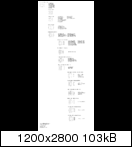
//typo fixed
_________________
(almost) complete list of Helios lenses
Last edited by no-X on Fri Dec 04, 2009 8:18 pm; edited 1 time in total |
|
| Back to top |
|
 |
indianadinos


Joined: 06 Jul 2008
Posts: 1310
Location: Toulouse, France
Expire: 2011-12-05
|
 Posted: Fri Dec 04, 2009 6:50 pm Post subject: Posted: Fri Dec 04, 2009 6:50 pm Post subject: |
 |
|
indianadinos wrote:
Wow, many thanks for sharing your excellent work ...
_________________
Please visit my blogs Shooting with a Pentax K10D / FF Visions
Takumar: 24/3.5, 28/3.5, 35/2, 35/3.5, 50/1.4, 55/1.8, 85/1.8, 105/2.8, 120/2.8, 135/3.5, 150/4, 200/4
Pentax-K: M28/2.8, K28/3.5, M50/1.4, A50/1.7, M50/4 Macro, K85/1.8, K105/2.8, K135/2.5, M200/4, M70-150/4
Zeiss: Flektogon 20/2.8, 20/4, 35/2.4, 35/2.8, Tessar 50/2.8, Pancolar 50/1.8, Biotar 58/2, Sonnar 135/3.5, Sonnar 180/2.8
Meyer: Primagon 35/4.5, Domiplan 50/2.8, Oreston 50/1.8, Primoplan 58/1.9, Trioplan 100/2.8, Orestor 100/2.8, Orestor 135/2.8
Schacht/Steinheil: Travenar 90/2.8, Travenon 135/4.5, Quinar 135/2.8, Quinar 135/3.5
Russian: MIR 37B, Industar 50/3.5, Helios 44M & 44M-2, Jupiter 37A
P6: Flektogon 50/4, Biometar 80/2.8, Orestor 300/4
Nikkor: Nikkor-O 35/2, Micro 55/3.5, Nikkor-S 50/1.4, Nikkor-Q 135/2.8
Fuji: EBC 28/3.5, EBC 55/3.5 Macro, EBC 135/2.5
Misc Lenses: Kiron 105/2.8 Macro, Tamron SP90/2.5
... and a few other Vivitar, Tamron, Sigma and Soligor lenses ...
|
|
| Back to top |
|
 |
ChrisLilley


Joined: 01 Jan 2008
Posts: 1767
Location: Nice, France
|
 Posted: Fri Dec 04, 2009 8:09 pm Post subject: Posted: Fri Dec 04, 2009 8:09 pm Post subject: |
 |
|
ChrisLilley wrote:
| no-X wrote: |
| Thanks for hints. Here is the updated version (added some Zeiss lenses, mainly C/Y, some QBM lenses, some Nikkors, Takumars etc. and missing 135mm Sonnars) |
Is the Nikkor-P 105/2.8 the 105/2.5?
_________________
Camera (ˈkæ mə rə), n. Device for taking pictures in bright light
There are 10 kinds of people in the world: those who understand binary, and those who don’t. Key: Ai-P, Ai, Ai'ed, AiS
Camera: Nikon D90, D40, DK-21M eyepiece, ML-3 remote MF lenses: Nikkor 20mm f/4 K, AI'ed | N.K. Nikkor-N 24mm f/2.8 | Nikkor-N.C 24mm f/2.8 | Nikkor 28mm f/2.8 AiS late model | Арсенал (Arsenal) Мир-24Н (Mir-24N) 35mm f/2 | Cosina Voigtländer Ultron SL II 40mm f/2.0 | Micro-Nikkor 55mm f/2.8 AiS | Zoom-Nikkor 80-200 f/4.5 Ai | ЛЗОС (LZOS) Юпитер-9 (Jupiter-9) 85mm f/2 | Cosina Voigtländer APO-Lanthar 90mm f/3.5 SL | Nikkor-P 105mm f/2.5 pre-Ai, Ai'ed | Micro-Nikkor 105mm f/4 | Schneider Kreuznach Componon 105mm f/5.6 | Nikkor 135mm f/2.8, Ai'ed 1976 model | Nikkor 180mm f/2.8 ED AiS | Арсенал (Arsenal) ТЕЛЕАР-Н (Telear-n) 200mm f/3.5 | Nikkor 300 mm f/4.5 Ai (full equipment list) |
|
| Back to top |
|
 |
no-X


Joined: 19 Jul 2008
Posts: 2495
Location: Budejky, Czech Republic
|
 Posted: Fri Dec 04, 2009 8:19 pm Post subject: Posted: Fri Dec 04, 2009 8:19 pm Post subject: |
 |
|
no-X wrote:
Corrected, thanks.
_________________
(almost) complete list of Helios lenses |
|
| Back to top |
|
 |
ChrisLilley


Joined: 01 Jan 2008
Posts: 1767
Location: Nice, France
|
 Posted: Fri Dec 04, 2009 8:47 pm Post subject: Posted: Fri Dec 04, 2009 8:47 pm Post subject: |
 |
|
ChrisLilley wrote:
This is a really interesting diagram, thanks for posting it!
Next question, what is the Nikkor 105/2.8 ? Looking here I don't see a 105/2.8 with the required number of elements and groups?
If its the second type of 105/2.5, where does the Schneider Xenotar design fit into your scheme? i understand the second design Nikkor 105/2.5 was a Xenotar-style lens.
_________________
Camera (ˈkæ mə rə), n. Device for taking pictures in bright light
There are 10 kinds of people in the world: those who understand binary, and those who don’t. Key: Ai-P, Ai, Ai'ed, AiS
Camera: Nikon D90, D40, DK-21M eyepiece, ML-3 remote MF lenses: Nikkor 20mm f/4 K, AI'ed | N.K. Nikkor-N 24mm f/2.8 | Nikkor-N.C 24mm f/2.8 | Nikkor 28mm f/2.8 AiS late model | Арсенал (Arsenal) Мир-24Н (Mir-24N) 35mm f/2 | Cosina Voigtländer Ultron SL II 40mm f/2.0 | Micro-Nikkor 55mm f/2.8 AiS | Zoom-Nikkor 80-200 f/4.5 Ai | ЛЗОС (LZOS) Юпитер-9 (Jupiter-9) 85mm f/2 | Cosina Voigtländer APO-Lanthar 90mm f/3.5 SL | Nikkor-P 105mm f/2.5 pre-Ai, Ai'ed | Micro-Nikkor 105mm f/4 | Schneider Kreuznach Componon 105mm f/5.6 | Nikkor 135mm f/2.8, Ai'ed 1976 model | Nikkor 180mm f/2.8 ED AiS | Арсенал (Arsenal) ТЕЛЕАР-Н (Telear-n) 200mm f/3.5 | Nikkor 300 mm f/4.5 Ai (full equipment list) |
|
| Back to top |
|
 |
no-X


Joined: 19 Jul 2008
Posts: 2495
Location: Budejky, Czech Republic
|
 Posted: Fri Dec 04, 2009 9:59 pm Post subject: Posted: Fri Dec 04, 2009 9:59 pm Post subject: |
 |
|
no-X wrote:
This is quite problematic, I think. Biometar/Xenotar are sometimes considered as a hybrid design based on triplet with signs of double-guass and anytimes as simplified planar/double-gauss...
Both Biometar and Primoplan has the same number of elements, cemented doublet at the same position and diaphragm at the same position, too.
I'm not physicist, but I think the only difference is in other balace of corrections. Primoplan has strongly curved cemented surface and near symmetrical semifinal element, while Biometar has near flat cemented surface and strongly curved semifinal element.
Nikkor's rear group is closer to the Biometar/Xenotar, while the front group with very thick cemented doublet is closer to tele-lenses based on Ernostar/Sonnar...
I'll possibly move this lens to different cathegory though.
_________________
(almost) complete list of Helios lenses |
|
| Back to top |
|
 |
patrickh


Joined: 23 Aug 2007
Posts: 8551
Location: Oregon
Expire: 2011-11-18
|
 Posted: Fri Dec 04, 2009 10:44 pm Post subject: Posted: Fri Dec 04, 2009 10:44 pm Post subject: |
 |
|
patrickh wrote:
What a sterling piece of work. Thanks
patrickh
This forum is becoming quite the clearing house for information on old lenses
_________________
DSLR: Nikon D300 Nikon D200 Nex 5N
MF Zooms: Kiron 28-85/3.5, 28-105/3.2, 75-150/3.5, Nikkor 50-135/3.5 AIS // MF Primes: Nikkor 20/4 AI, 24/2 AI, 28/2 AI, 28/2.8 AIS, 28/3.5 AI, 35/1.4 AIS, 35/2 AIS, 35/2.8 PC, 45/2.8 P, 50/1.4 AIS, 50/1.8 AIS, 50/2 AI, 55/2.8 AIS micro, 55/3.5 AI micro, 85/2 AI, 100/2,8 E, 105/1,8 AIS, 105/2,5 AIS, 135/2 AIS, 135/2.8 AIS, 200/4 AI, 200/4 AIS micro, 300/4.5 AI, 300/4.5 AI ED, Arsat 50/1.4, Kiron 28/2, Vivitar 28/2.5, Panagor 135/2.8, Tamron 28/2.5, Tamron 90/2.5 macro, Vivitar 90/2.5 macro (Tokina) Voigtlander 90/3.5 Vivitar 105/2.5 macro (Kiron) Kaleinar 100/2.8 AI Tamron 135/2.5, Vivitar 135/2.8CF, 200/3.5, Tokina 400/5,6
M42: Vivitar 28/2.5, Tamron 28/2.5, Formula5 28/2.8, Mamiya 28/2.8, Pentacon 29/2.8, Flektogon 35/2.4, Flektogon 35/2.8, Takumar 35/3.5, Curtagon 35/4, Takumar 50/1.4, Volna-6 50/2.8 macro, Mamiya 50/1.4, CZJ Pancolar 50/1,8, Oreston 50/1.8, Takumar 50/2, Industar 50/3.5, Sears 55/1.4, Helios 58/2, Jupiter 85/2, Helios 85/1.5, Takumar 105/2.8, Steinheil macro 105/4.5, Tamron 135/2.5, Jupiter 135/4, CZ 135/4, Steinheil Culminar 135/4,5, Jupiter 135/3.5, Takumar 135/3.5, Tair 135/2.8, Pentacon 135/2.8, CZ 135/2.8, Taika 135/3.5, Takumar 150/4, Jupiter 200/4, Takumar 200/4
Exakta: Topcon 100/2.8(M42), 35/2.8, 58/1.8, 135/2.8, 135/2.8 (M42), Kyoei Acall 135/3.5
C/Y: Yashica 28/2.8, 50/1.7, 135/2.8, Zeiss Planar 50/1.4, Distagon 25/2.8
Hexanon: 28/3.5, 35/2.8, 40/1.8, 50/1.7, 52/1.8, 135/3.2, 135/3.5, 35-70/3.5, 200/3.5
P6 : Mir 38 65/3.5, Biometar 80/2.8, Kaleinar 150/2.8, Sonnar 180/2.8
Minolta SR: 28/2.8, 28/3.5, 35/2.8, 45/2, 50/2, 58/1.4, 50/1.7, 135/2.8, 200/3.5
RF: Industar 53/2.8, Jupiter 8 50/2
Enlarg: Rodagon 50/5,6, 80/5,6, 105/5.6, Vario 44-52/4, 150/5.6 180/5.6 El Nikkor 50/2,8,63/2.8,75/4, 80/5,6, 105/5.6, 135/5.6 Schneider 60/5.6, 80/5.6, 80/4S,100/5.6S,105/5.6,135/5.6, 135/5.6S, 150/5.6S, Leica 95/4 |
|
| Back to top |
|
 |
overmywaders

Joined: 27 May 2009
Posts: 49
|
 Posted: Fri Dec 04, 2009 11:42 pm Post subject: Posted: Fri Dec 04, 2009 11:42 pm Post subject: |
 |
|
overmywaders wrote:
Wonderful, thanks!
_________________
Lenses: Tokina Super-Lentar 35/2.8, Schneider-Kreuznach Jsogon 40/4.5, Ludwig Meritar 50/2.9, Ludwig Peconar 50/2.9, Leica Elmar 90/4, Steinheil Cassar 105/4.5, Steinheil Cintagon 100/3.5, Piesker Picon 135/3.5, Telisar 135/3/5, Accura Anastigmat 135/4.5, CZJ Triotar 135/4, Steinheil Culminar 135/4.5, Bausch & Lomb Tessar IIb 158/6.3, Piesker Tele-Picon 180/5.5, Piesker Picon 250/4.5, Piesker Tele-Picon 400/4.5
Last edited by overmywaders on Sat Dec 05, 2009 12:02 am; edited 1 time in total |
|
| Back to top |
|
 |
Farside


Joined: 01 Sep 2007
Posts: 6557
Location: Ireland
Expire: 2013-12-27
|
 Posted: Fri Dec 04, 2009 11:58 pm Post subject: Posted: Fri Dec 04, 2009 11:58 pm Post subject: |
 |
|
Farside wrote:
| no-X wrote: |
Thanks for hints. Here is the updated version (added some Zeiss lenses, mainly C/Y, some QBM lenses, some Nikkors, Takumars etc. and missing 135mm Sonnars)

//typo fixed |
Excellent work - many thanks.
_________________
Dave - Moderator
Camera Fiend and Biograph Operator
If I wanted soot and whitewash I'd be a chimney sweep and house painter.
The Lenses of Farside (click)
BUY FRESH FOMAPAN TO HELP KEEP THE FACTORY ALIVE ---
Foma Campaign topic -
http://forum.mflenses.com/foma-campaign-t55443.html
FOMAPAN on forum -
http://www.mflenses.com/fs.php?sw=Fomapan
Webshop Norway
http://www.fomafoto.com/
Webshop Czech
https://fomaobchod.cz/inshop/scripts/shop.aspx?action=DoChangeLanguage&LangID=4 |
|
| Back to top |
|
 |
kuuan


Joined: 14 Jan 2008
Posts: 4569
Location: right now: Austria
Expire: 2014-12-26
|
 Posted: Sat Dec 05, 2009 12:09 am Post subject: Posted: Sat Dec 05, 2009 12:09 am Post subject: |
 |
|
kuuan wrote:
 WOW WOW 
thank you no-X!
_________________
my photos on flickr: https://www.flickr.com/photos/kuuan/collections |
|
| Back to top |
|
 |
dakoo


Joined: 08 Mar 2008
Posts: 603
|
 Posted: Sat Dec 05, 2009 6:59 am Post subject: Posted: Sat Dec 05, 2009 6:59 am Post subject: |
 |
|
dakoo wrote:
This is very well made one..
Excellent. Finally i am able to understand the comparisions ...
Thanks a lot..
_________________
Yashica ML 2.4/24, ML 2.4./28,
Zeiss Distagon 35/1.4, Planer 1.4/50, Planer 1.7/50,
SMC Tak 1.4/50,Tessar 2.8/50, Jupiter2/85
CZJ 4/135; Pentacon 4/200
Canon Tns 24/3.5
|
|
| Back to top |
|
 |
aoleg


Joined: 22 Feb 2008
Posts: 1387
Location: Berlin, DE
|
 Posted: Sat Dec 05, 2009 8:52 am Post subject: Posted: Sat Dec 05, 2009 8:52 am Post subject: |
 |
|
aoleg wrote:
Well done - a useful piece!
_________________
List of lenses |
|
| Back to top |
|
 |
MF-addicted


Joined: 11 Mar 2009
Posts: 803
Location: Stuttgart (Germany)
|
 Posted: Sat Dec 05, 2009 9:28 am Post subject: Posted: Sat Dec 05, 2009 9:28 am Post subject: |
 |
|
MF-addicted wrote:
Thank you for the provided details.
Informations about the Steinheil Cassars and others would be helpful, too.
A well honoured work you have done with providing your list.

_________________
EOS 5D MK II, EOS 5D Classic, EOS 400D --------------------------------------------------------------------------------------------------------------------------------
Canon FD to EOS converted: FD 1,4/24 asph, FD 2,8/300 L
Carl Zeiss Jena:Pancolar 2/50, black Biotar 2/5,8cm 17bl., slim Biotar 1,5/7,5cm 18bl., Pancolar 1,8/80mm, Sonnar 3,5/135, Triotar 4/135
Carl Zeiss: Distagon 4/18T*, Distagon 1,4/35 HFT, Planar 1,4/50 T*, Vario-Sonnar 3,4/35-70 T*,Vario-Sonnar 4,5-5,6/100-300 T*
Leitz: Elmarit-R 2.8/28 E55 II, Summicron-R 35 I, Elmarit-R Wetzlar 2.8/35 E55 II, Summicron-R 2/50 Wetzlar I, Macro Elmarit-R 2.8/60 I, Summicron-R 2/90 E55 I, Elmarit-R 2,8/90 I, Elmarit-R Wetzlar 2,8/135 I, Elmarit-R 2.8/180 Wetzlar E67 II, Vario Elmar 4/70-210 E60, MR Telyt-R 8/500
Schneider: Xenar 2.8/50
Russian: Industar 50-2, Industar 61,Helios-44-1 2/58mm,Helios-44-2 2/58mm, MC 3M-5CA 8/500
Meyer: Pentacon 3,5/30, Domiplan 2,8/50, Trioplan 2,9/50, Trioplan 3,5/75, Trioplan 2,8/100, Orestor 2,8/135mm, Orestegon 4/200
ISCO: Westron 2,8/35, Westron 3,5/35, Tele-Westanar 3,5/135, Tele-Westanar 4/180
Yashica: ML 15, ML 21, ML 24, ML 28, ML 35, ML 100/3.5 Macro,
Nikon: Nikkor AI 2,0/24, Nikkor AIS 2,0/28, Nikkor Ai 1,8/50, Nikkor-P (Sonnar) 2,5/105 silver, Nikkor-P (Gauss) 2,5/105 black
Steinheil Cassar 3,5-4,5/75 VL, Quinar 3,5/85, Culminar 4,5/105, Culminar 4,5/135, Auto-D Tele Quinar 2,8/135
Tomioka Tomioka - Cosinon 1,2/55, Tomioka - Revuenon 1,4/55
Voigtländer: Septon 2/50
Others: Officine Galileo Ingra 3,5/5cm, Wilon 4,5/75, Dallmeyer 4,5/4", Bonotar 4,5/105,
Lenses for sale, please contact via PM: None at the moment
|
|
| Back to top |
|
 |
BRunner

Joined: 29 Jul 2009
Posts: 705
Location: Czech Republic
|
 Posted: Sat Dec 05, 2009 1:51 pm Post subject: Posted: Sat Dec 05, 2009 1:51 pm Post subject: |
 |
|
BRunner wrote:
Hi no-x, than you for helpful information. What about the Tairs? I think, they are Triplets too.
Tair-2/3
Tair-11 |
|
| Back to top |
|
 |
estudleon


Joined: 15 May 2008
Posts: 3754
Location: Argentina
|
 Posted: Sat Dec 05, 2009 1:58 pm Post subject: Posted: Sat Dec 05, 2009 1:58 pm Post subject: |
 |
|
estudleon wrote:
Excelent!!!!
It´s in the same level of your comparision of 35 mm lenses, pancolar, 135 mm, etc.
Now I can see why the rendering of my mamiya TL 2,8/135 mm lens (ernostar) is so different than the CZJ 2,5/135 sonnar one.
But I have a doubt :
1- The mamiya 2,8/135 first version (TL) is the ernostar schame
See the link posted in http://freenet-homepage.de/stauber/mamiya-nc/m42_mamiya_135_2.8_tl.htm
2- The mamiya 2,8/135- 2nd version -DTL- had the same schame than the first version.
See http://freenet-homepage.de/stauber/mamiya-nc/m42_mamiya_135_2.8_dtl.htm
3- The mamiya 2,8/135 3rd version is the SX had the same design (4/4) that the 2nd.
See http://freenet-homepage.de/stauber/mamiya-nc/m42_mamiya_sx_135_2.8.htm
4- But the rolleinar (made by mamiya) 2,8/135 isn't the TL, DTL or SX version
Becuase it's a sonnar design??? (4/4)
See http://www.taunusreiter.de/Cameras/Rollei_QBM_Schneider_dt.html#Rolleinar
5- and Rolleinar is not the last mamiya CS 2,8/135 lens (5/4).
See http://freenet-homepage.de/stauber/mamiya-nc/cs_135_2.8.htm
Rolleinar-Mamioya isn't clear to me.
Rino.
_________________
Konica 2,8/100
CZJ: 4/20, 2,4/35, 1,8/50 aus jena, 3,5/135MC, Pentacon 1,8/50
Pentax S-M-C-1,4/50
Helios 44-3
Mamiya 2,8/135
Misc. : jupiter 9
Stuff used:
A) SRL
Alpa 10 D - kern macro Switar 1,9/50 -black, Kilffit apochromat 2/100.
Asahi pentax spotmatic super takumar 1,4/50
Contaflex super B tessar 2,8/50 Pro-tessar 115
Leica R3 electronic summicron 2/50 elmarit 2,8/35
Konica Autoreflex 3 (2 black and chrome one), TC, T4. 2,8/24, 3,5/28 not MC and MC, 1,8/40, 1,4/50, 1,7/50 MC and not MC, 1,8/85, 3,2/135, 3,5/135, 4/200
Minolta XG9 2,8/35, 2/45, 3,5/135
Nikkormat FTn 1,4/50, 2,8/135
Fujica ST 801, 605, 705n. 3,5/19, 1,4/50, 1,8/55, 4/85, 3,5/135.
Praktica MTL 5 and a lot of M42 lenses.
Voigtlander. Bessamatic m, bessamatix de luxe, bessamatic cs, ultramatic and ultramatic cs.
Skoparex 3,5/35, skopagon 2/40, skopar 2,8/50, skopar X 2,8/50, super lanthar (out of catalogue) 2,8/50, dinarex 3,4/90, dinarex 4,8/100, super dinarex 4/135, super dinarex 4/200, zoomar 2,8/36-83, portrait lens 0, 1 and 2. Curtagon 4/28 and 2,8/35
Canon AV1, 1,8/50
Rolleiflex SL35 and SL35 E. 2,8/35 angulon, 2,8/35 distagon, 1,4/55 rolleinar, 1,8/50 planar, 4/135 tessar, 2,8/135 rolleinar, x2 rollei, M42 to rollei adap.
Etc.
RF
Yashica Minister III
Voightlander Vito, vitomatic I, Vito C, etc.
Leica M. M2, M3 (d.s.) and M4. Schenider 3,4/21, 2/35 summaron 2,8/35 (with eyes). Summicron 2/35 (8 elements with eyes), 2/35 chrome, 2/35 black, 1,4/35 pre asph and aspheric - old -, 2/40 summicron, 2,8/50 elmar, 2/50 7 elements, 2/50 DR, 2/50 - minolta version, 1,4/50 summilux 1966 version, 1,4/75 summilux, 2/90 large version, 2/90 reduced version of 1987, 2,8/90 elmarit large version, 4/135 elmar. |
|
| Back to top |
|
 |
no-X


Joined: 19 Jul 2008
Posts: 2495
Location: Budejky, Czech Republic
|
 Posted: Sat Dec 05, 2009 3:48 pm Post subject: Posted: Sat Dec 05, 2009 3:48 pm Post subject: |
 |
|
no-X wrote:

4/4 construction is typical Ernostar. Typical sign of Sonnar is (at least one) cemented triplet:
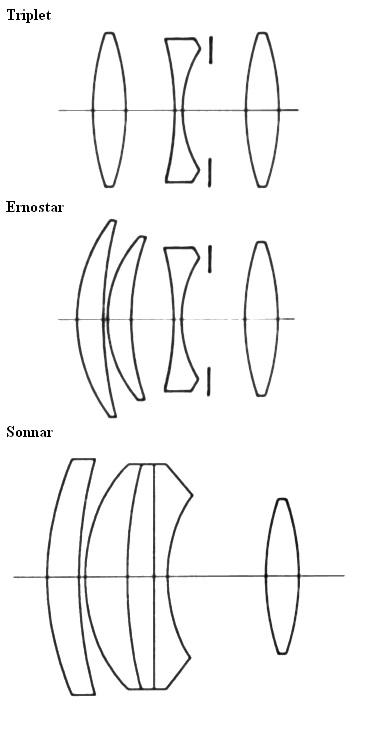
(while Primoplan is Ernostar with cemented doublet instead of the 2nd element)
These Rolleinars were manufactured by Mamiya and because of that I mentioned "Mamiya-Rolleinar" in the list.
_________________
(almost) complete list of Helios lenses |
|
| Back to top |
|
 |
estudleon


Joined: 15 May 2008
Posts: 3754
Location: Argentina
|
 Posted: Sat Dec 05, 2009 4:18 pm Post subject: Posted: Sat Dec 05, 2009 4:18 pm Post subject: |
 |
|
estudleon wrote:
Yes, NoX
But did you note the following:
The second, thick element of the rolleinar (same as the present in the sonnars 135 lenses), is more similar to the sonnar 2nd and 3rd cemented elements (in only one element) than to the 2nd ans 3rd elements in the ernostar?
The ernostar didn't have a thick 2nd element.
Rino.
_________________
Konica 2,8/100
CZJ: 4/20, 2,4/35, 1,8/50 aus jena, 3,5/135MC, Pentacon 1,8/50
Pentax S-M-C-1,4/50
Helios 44-3
Mamiya 2,8/135
Misc. : jupiter 9
Stuff used:
A) SRL
Alpa 10 D - kern macro Switar 1,9/50 -black, Kilffit apochromat 2/100.
Asahi pentax spotmatic super takumar 1,4/50
Contaflex super B tessar 2,8/50 Pro-tessar 115
Leica R3 electronic summicron 2/50 elmarit 2,8/35
Konica Autoreflex 3 (2 black and chrome one), TC, T4. 2,8/24, 3,5/28 not MC and MC, 1,8/40, 1,4/50, 1,7/50 MC and not MC, 1,8/85, 3,2/135, 3,5/135, 4/200
Minolta XG9 2,8/35, 2/45, 3,5/135
Nikkormat FTn 1,4/50, 2,8/135
Fujica ST 801, 605, 705n. 3,5/19, 1,4/50, 1,8/55, 4/85, 3,5/135.
Praktica MTL 5 and a lot of M42 lenses.
Voigtlander. Bessamatic m, bessamatix de luxe, bessamatic cs, ultramatic and ultramatic cs.
Skoparex 3,5/35, skopagon 2/40, skopar 2,8/50, skopar X 2,8/50, super lanthar (out of catalogue) 2,8/50, dinarex 3,4/90, dinarex 4,8/100, super dinarex 4/135, super dinarex 4/200, zoomar 2,8/36-83, portrait lens 0, 1 and 2. Curtagon 4/28 and 2,8/35
Canon AV1, 1,8/50
Rolleiflex SL35 and SL35 E. 2,8/35 angulon, 2,8/35 distagon, 1,4/55 rolleinar, 1,8/50 planar, 4/135 tessar, 2,8/135 rolleinar, x2 rollei, M42 to rollei adap.
Etc.
RF
Yashica Minister III
Voightlander Vito, vitomatic I, Vito C, etc.
Leica M. M2, M3 (d.s.) and M4. Schenider 3,4/21, 2/35 summaron 2,8/35 (with eyes). Summicron 2/35 (8 elements with eyes), 2/35 chrome, 2/35 black, 1,4/35 pre asph and aspheric - old -, 2/40 summicron, 2,8/50 elmar, 2/50 7 elements, 2/50 DR, 2/50 - minolta version, 1,4/50 summilux 1966 version, 1,4/75 summilux, 2/90 large version, 2/90 reduced version of 1987, 2,8/90 elmarit large version, 4/135 elmar. |
|
| Back to top |
|
 |
no-X


Joined: 19 Jul 2008
Posts: 2495
Location: Budejky, Czech Republic
|
 Posted: Sat Dec 05, 2009 11:30 pm Post subject: Posted: Sat Dec 05, 2009 11:30 pm Post subject: |
 |
|
no-X wrote:
The thickness depends on focal length and speed of the particular lens. The longer focal length, the thicker element. The triplet and ernostar in the picture examples are valid for standard lenses. Basic Ernostar is described as a lens consisting of two positive elements (meniscus), one negative element and one positive element at the end of optical block.
Despite many lenses are marketed as Sonnars, they are based on Ernostar designs and even the patent descriptions call them Ernostars.
Anyway, here is the rest...
double-gauss:
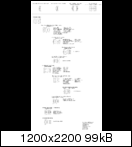
triplets:
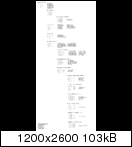
hybrid designs:

_________________
(almost) complete list of Helios lenses |
|
| Back to top |
|
 |
aoleg


Joined: 22 Feb 2008
Posts: 1387
Location: Berlin, DE
|
 Posted: Sun Dec 06, 2009 2:00 am Post subject: Posted: Sun Dec 06, 2009 2:00 am Post subject: |
 |
|
aoleg wrote:
I'd like to suggest a few lenses to add to your list.
1. Nikkor 135/3.5 (pre-Ai) falls into "Sonnar (simplified, 4 elements)"
http://www.mir.com.my/rb/photography/companies/nikon/nikkoresources/6070nikkor/telephoto/135mm.htm
2. Nikkor 135/3.5 (Ai, Ai-S), Nikkor-Q 135/2.8 fall into "Ernostar"
http://www.mir.com.my/rb/photography/companies/nikon/nikkoresources/135mmnikkor/index.htm
3. Nikkor pre-Ai and Ai 180/2.8, Leitz Elmarit 180/2.8 are... well, they are Sonnars, but yet another type; this optical construction was shared by many 135mm and 180mm lenses:
http://www.mir.com.my/rb/photography/companies/nikon/nikkoresources/late70nikkor/telephoto/180mm.htm
3. Nikkor pre-Ai 85/1.8 is "Biotar / Xenon"
http://www.mir.com.my/rb/photography/companies/nikon/nikkoresources/preAI70/85mm.htm
4. Nikkor Ai, Ai-S 85/2 are "5-element Takumar (hybrid of Ernostar and simplified Ultron"
http://www.mir.com.my/rb/photography/companies/nikon/nikkoresources/85mmnikkor/85mm2.htm
_________________
List of lenses |
|
| Back to top |
|
 |
|
|
